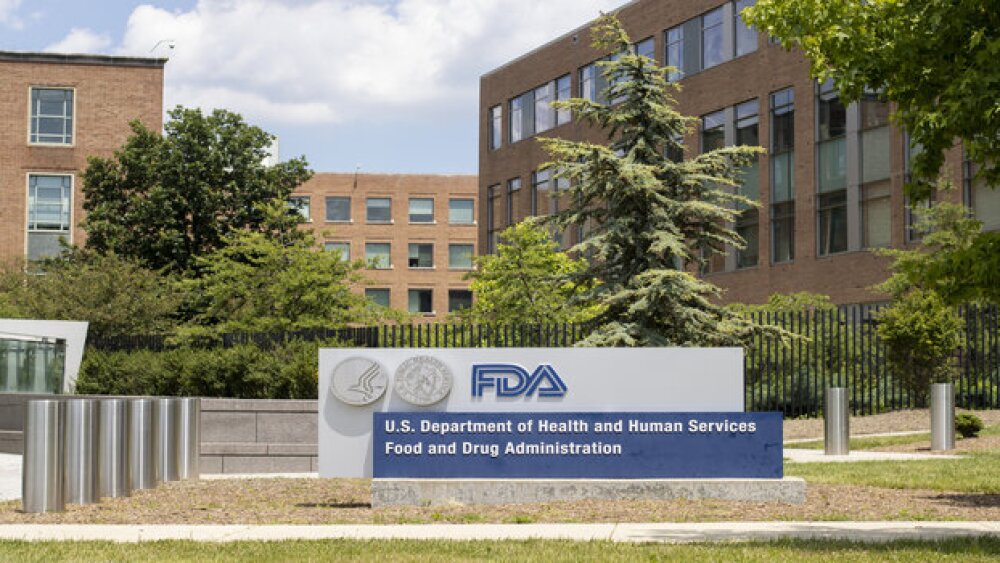Patients in a real-world setting experienced similar dosing patterns as seen in the pivotal Phase 3 NAPOLI-1 clinical trial
– Patients in a real-world setting experienced similar dosing patterns as seen in the pivotal Phase 3 NAPOLI-1 clinical trial –
CAMBRIDGE, Mass.--(BUSINESS WIRE)-- Ipsen Biopharmaceuticals, an affiliate of Ipsen (Euronext: IPN; ADR: IPSEY), today announced results from a retrospective, observational analysis examining the real-world dosing patterns of patients with metastatic pancreatic cancer (mPC) treated with ONIVYDE® (irinotecan liposome injection), at this year’s European Society for Medical Oncology (ESMO) annual congress taking place in Munich, Germany, Oct. 19-23, 2018.
Using the Flatiron Health electronic health record (EHR)-derived database, a longitudinal and nationally representative database comprising patient-level structured and unstructured data that is curated via technology-enabled abstraction, researchers identified 257 metastatic pancreatic cancer patients (median age: 67y; IQR: 61–74) who received ONIVYDE + fluorouracil (5-FU) and leucovorin (LV) therapy between November 2015 to August 2017 and analyzed their treatment data to assess dose intensity (DI) over the first 6 weeks of treatment, dose modifications during treatment, and overall duration of exposure (DOE) to ONIVYDE.
The real-world analysis (Poster 735P) describes how ONIVYDE was incorporated in the treatment sequencing that contained prior gemcitabine in the treatment of metastatic pancreatic cancer. In this analysis, the mean dose intensity was 177.8 mg/m2 (SD: 74.9 mg/m2). The median dose at initiation was 69.4 mg/m2 (IQR: 56.7–70.2); the recommended dose for ONIVYDE is 70 mg/m2. In addition, median duration of exposure was 8.9 weeks (IQR: 3.9/19 weeks) in first and second line and 6.3 weeks (IQR: 3.4/12.1 weeks) in third or plus lines.
These results are generally consistent with the NAPOLI-1 trial, however, dose modifications in the real-world analysis were lower (27.2% vs 45% in NAPOLI-1). In the NAPOLI-1 phase 3 trial, dose intensity over 6 weeks and duration of exposure for combination therapy with ONIVYDE was 167.5 mg/m2 (SD 44.8) and 8.7 weeks (IQR: 5.4 – 22.0), respectively. Despite these real-world patients being older, having worse performance status and more prior lines of treatment than patients in NAPOLI-1, more than half (59.1%) of patients started ONIVYDE + 5-FU/LV treatment with the recommended ONIVYDE dose (70 mg/m2).
NAPOLI-1 is the largest global, phase 3, randomized, open-label, multicenter trial in patients (N=417) with metastatic pancreatic cancer whose disease had progressed following gemcitabine-based therapy. Patients in the NAPOLI-1 trial being treated with ONIVYDE in combination with fluorouracil (5-FU) and leucovorin (LV) had improved overall survival (OS; primary endpoint) vs 5-FU/LV (6.1 mos vs 4.2 mos; HR = 0.67, 95% CI 0.49–0.92; P = 0.012). ONIVYDE monotherapy had no effect on OS.
ONIVYDE can cause severe, life-threatening neutropenia and diarrhea (see complete Boxed Warning in full prescribing information). ONIVYDE can also cause severe and fatal Interstitial Lung Disease (ILD) and hypersensitivity reactions. These serious adverse events may require withholding or discontinuing treatment with ONIVYDE, a dose reduction and/or supportive treatment. The most common adverse reactions in NAPOLI-1 (≥20%) were diarrhea (59%), fatigue/asthenia (56%), vomiting (52%), nausea (51%), decreased appetite (44%), stomatitis (32%), and pyrexia (23%).
“Patients are at the heart of what we do, with unmet need guiding our development strategy and driving how we innovate for patient care,” said Dr. Sotirios Stergiopoulos, Senior Vice President, Head of Global Medical Affairs and Chief Medical Officer. “This real-world data analysis provides further evidence in support of the dose intensity and duration of exposure of ONIVYDE and 5-FU/LV observed in the NAPOLI-1 phase 3 trial. This retrospective analysis allows us to further understand how patients with pancreatic cancer are receiving and managing their treatment in real-world settings.”
Dr. Afsaneh Barzi, Study Investigator, Norris Comprehensive Cancer Center, University of Southern California, Los Angeles, Calif., notes, “As a physician who treats patients with metastatic pancreatic cancer, I find it reassuring and welcome the unique evidence the Flatiron dosing analysis provides in demonstrating the real-world usage of ONIVYDE + 5-FU/LV in a large sample of metastatic pancreatic cancer patients being treated in a clinical oncology setting when compared to a clinical trial setting. Data from our real-world practice for clinical analysis serve to further our knowledge about how to continue to effectively treat our patients.”
About Pancreatic Cancer
Pancreatic cancer is a rare and deadly disease with about 55,440 people (29,200 men and 26,240 women) being diagnosed with pancreatic cancer in the United States alone.1 More than half are diagnosed with metastatic disease, which has an overall 5-year survival rate of less than three percent (3%)1, and often rapidly progresses during or shortly after receiving chemotherapy.2 Pancreatic cancer accounts for about 3% of all cancers, and is the third leading cause of cancer-related death in the United States, surpassing breast cancer.1 It is expected to become the second leading cause of cancer-related death in the U.S. by the year 2030, surpassing colorectal cancer.1,3
About ONIVYDE®
ONIVYDE is an encapsulated formulation of irinotecan. This long-circulating liposomal form is designed to increase length of tumor exposure to both irinotecan and its active metabolite, SN38. ONIVYDE is approved by the U.S. FDA, EMA and many other countries. In the U.S., ONIVYDE is approved for use in combination with fluorouracil (5-FU) and leucovorin (LV) for the treatment of patients with metastatic adenocarcinoma of the pancreas after disease progression following gemcitabine-based therapy. ONIVYDE is not indicated as a single agent for the treatment of patients with metastatic adenocarcinoma of the pancreas. Ipsen has gained exclusive commercialization rights for the current and potential future indications for ONIVYDE in the U.S., as well as the current licensing agreements with Servier for commercialization rights ex-U.S. and PharmaEngine for Taiwan.
|
IMPORTANT SAFETY INFORMATION: |
|
WARNING: SEVERE NEUTROPENIA and SEVERE DIARRHEA |
|
Fatal neutropenic sepsis occurred in 0.8% of patients receiving ONIVYDE®. Severe or life-threatening neutropenic fever or sepsis occurred in 3% and severe or life- threatening neutropenia occurred in 20% of patients receiving ONIVYDE® in combination with fluorouracil (5-FU) and leucovorin (LV). Withhold ONIVYDE® for absolute neutrophil count below 1500/mm3 or neutropenic fever. Monitor blood cell counts periodically during treatment. |
|
Severe diarrhea occurred in 13% of patients receiving ONIVYDE® in combination with 5- FU/LV. Do not administer ONIVYDE® to patients with bowel obstruction. Withhold ONIVYDE® for diarrhea of Grade 2-4 severity. Administer loperamide for late diarrhea of any severity. Administer atropine, if not contraindicated, for early diarrhea of any severity. |
CONTRAINDICATION
ONIVYDE® is contraindicated in patients who have experienced a severe hypersensitivity reaction to ONIVYDE® or irinotecan HCl.
WARNINGS AND PRECAUTIONS
Severe Neutropenia: See Boxed WARNING. In patients receiving ONIVYDE®/ 5-FU/LV, the incidence of Grade 3/4 neutropenia was higher among Asian (18/33 [55%]) vs White patients (13/73 [18%]). Neutropenic fever/neutropenic sepsis was reported in 6% of Asian vs 1% of White patients
Severe Diarrhea: See Boxed WARNING. Severe and life-threatening late-onset (onset >24 hours after chemotherapy [9%]) and early-onset diarrhea (onset ≤24 hours after chemotherapy [3%], sometimes with other symptoms of cholinergic reaction) were observed
Interstitial Lung Disease (ILD): Irinotecan HCl can cause severe and fatal ILD. Withhold ONIVYDE® in patients with new or progressive dyspnea, cough, and fever, pending diagnostic evaluation. Discontinue ONIVYDE® in patients with a confirmed diagnosis of ILD
Severe Hypersensitivity Reactions: Irinotecan HCl can cause severe hypersensitivity reactions, including anaphylactic reactions. Permanently discontinue ONIVYDE® in patients who experience a severe hypersensitivity reaction
Embryo-Fetal Toxicity: ONIVYDE® can cause fetal harm when administered to a pregnant woman. Advise females of reproductive potential to use effective contraception during and for 1 month after ONIVYDE® treatment
ADVERSE REACTIONS
- The most common adverse reactions (≥20%) were diarrhea (59%), fatigue/asthenia (56%), vomiting (52%), nausea (51%), decreased appetite (44%), stomatitis (32%), and pyrexia (23%)
- The most common Grade 3/4 adverse reactions (≥10%) were diarrhea (13%), fatigue/asthenia (21%), and vomiting (11%)
- Adverse reactions led to permanent discontinuation of ONIVYDE® in 11% of patients receiving ONIVYDE®/5-FU/LV; The most frequent adverse reactions resulting in discontinuation of ONIVYDE® were diarrhea, vomiting, and sepsis
- Dose reductions of ONIVYDE® for adverse reactions occurred in 33% of patients receiving ONIVYDE®/5-FU/LV; the most frequent adverse reactions requiring dose reductions were neutropenia, diarrhea, nausea, and anemia
- ONIVYDE® was withheld or delayed for adverse reactions in 62% of patients receiving ONIVYDE®/5-FU/LV; the most frequent adverse reactions requiring interruption or delays were neutropenia, diarrhea, fatigue, vomiting, and thrombocytopenia
- The most common laboratory abnormalities (≥20%) were anemia (97%), lymphopenia (81%), neutropenia (52%), increased ALT (51%), hypoalbuminemia (43%), thrombocytopenia (41%), hypomagnesemia (35%), hypokalemia (32%), hypocalcemia (32%), hypophosphatemia (29%), and hyponatremia (27%)
DRUG INTERACTIONS
- Avoid the use of strong CYP3A4 inducers, if possible, and substitute non-enzyme inducing therapies ≥2 weeks prior to initiation of ONIVYDE®
- Avoid the use of strong CYP3A4 or UGT1A1 inhibitors, if possible, and discontinue strong CYP3A4 inhibitors ≥1 week prior to starting therapy
USE IN SPECIFIC POPULATIONS
- Pregnancy and Reproductive Potential: See WARNINGS & PRECAUTIONS. Advise males with female partners of reproductive potential to use condoms during and for 4 months after ONIVYDE® treatment
- Lactation: Advise nursing women not to breastfeed during and for 1 month after ONIVYDE® treatment
Please see full U.S. Prescribing Information including Boxed WARNING for ONIVYDE®.
ONIVYDE® is a registered trademark of Ipsen Biopharm Limited.
All other trademarks are the property of their respective owners.
© 2018 Ipsen Biopharmaceuticals, Inc.
NON-US-00681 October 2018
1. Key Statistics for Pancreatic Cancer. American Cancer Society. https://www.cancer.org/cancer/pancreatic-cancer/about/key-statistics.html. Published January 4, 2018. Accessed October 20, 2018
2. Ammermann et al. Decision Resources. Disease Landscape and Forecast: Pancreatic Cancer. June 2016.
3. Rahib L, Smith BD, Aizenberg, et al. Projecting cancer incidence and deaths to 2030: the unexpected burden of thyroid, liver, and pancreas cancers in the United States. Cancer Res. 2014 Jun 1;74(11):2913-21. doi: 10.1158/0008- 5472.CAN-14-0155.
View source version on businesswire.com: https://www.businesswire.com/news/home/20181021005030/en/
Contacts
For Ipsen Biopharmaceuticals
Marisol Peron, +1 908-275-6330
Vice President, NA Communications
marisol.peron@ipsen.com
or
Sothea Shrek, +1 646-795-6059
sshreck@w2ogroup.com
Source: Ipsen Biopharmaceuticals






